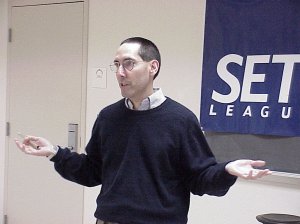Chris Thompson G0KLA reports on the AMSAT Bulletin Board that the telemetry decoder software for the Fox FM transponder CubeSats is now available for download. At the time of writing Fox-1A was scheduled to be launched on Ocober 8, 2015 with Fox-1Cliff and Fox-1D slated for early 2016.
Version 1.0 of the FoxTelem software, the Fox Telemetry Decoder is being released to enable setup, testing, and debugging of your Fox-1A ground station prior to the launch of the satellite. FoxTelem is used to demodulate, store and analyze telemetry data from AMSAT’s Fox series of CubeSats.
Fox-1 satellites include two telemetry formats:
 + Slow Speed, also called Data Under Voice (DUV) is 200 bps FSK data sent at the same time as the transponder audio. Whenever the transmitter is on, data is being sent. This happens during beacons and during live QSOs.
+ Slow Speed, also called Data Under Voice (DUV) is 200 bps FSK data sent at the same time as the transponder audio. Whenever the transmitter is on, data is being sent. This happens during beacons and during live QSOs.
+ High Speed is 9600 bps FSK sent instead of the transponder. This is used for data intensive experiments such as the Virginia Tech Camera. This is only active when commanded from the ground. You can recognize High Speed because it sounds like an old school computer modem.
FoxTelem will receive and store both formats assuming you can feed it audio that does not have the frequencies below 200 Hz filtered. For High Speed, the audio must also extend to include the full 9600bps bandwidth of the FM signal. For both modes this is best achieved from a Software Defined Radio or from the 9600 bps packet port of some radios. The FoxTelem User Guide provides more details.
 FoxTelem is supplied as an archive file (.zip on windows, .dmg file on MacOs, .gzip on Linux). Links for downloading can be found at http://www.amsat.org/?page_id=4532
FoxTelem is supplied as an archive file (.zip on windows, .dmg file on MacOs, .gzip on Linux). Links for downloading can be found at http://www.amsat.org/?page_id=4532
You can unzip the contents and put it in the directory of your choice. Also, detailed in the User Guide, are instructions to select the sound source and set received audio levels on your computer.
Until Fox-1A is launched you can confirm everything is working by testing with test wav file which will be available from:
http://amsat.us/FoxTelem/recordings
Access to the test file is accomplished by selecting “Load Wav File” from the FoxTelem File menu, then navigate to the directory where you saved the test wav file. Once you press the start button the file will play through the decoder.
The FoxTelem page can also be accessed from the main AMSAT web page:
http://www.amsat.org –> Fox Project –> FoxTelem Software for Windows, Mac, & Linux
The direct link to the page is: http://www.amsat.org/?page_id=4532
FoxTelem Notes:
• Please make sure “upload to server” is enabled in settings
• Goto INPUT tab, STOP the input, then FILE – DELETE PAYLOAD FILES, then START input again Just once, to clear test data.
Fox-Cam page http://amsat.us/?page_id=38











You must be logged in to post a comment.